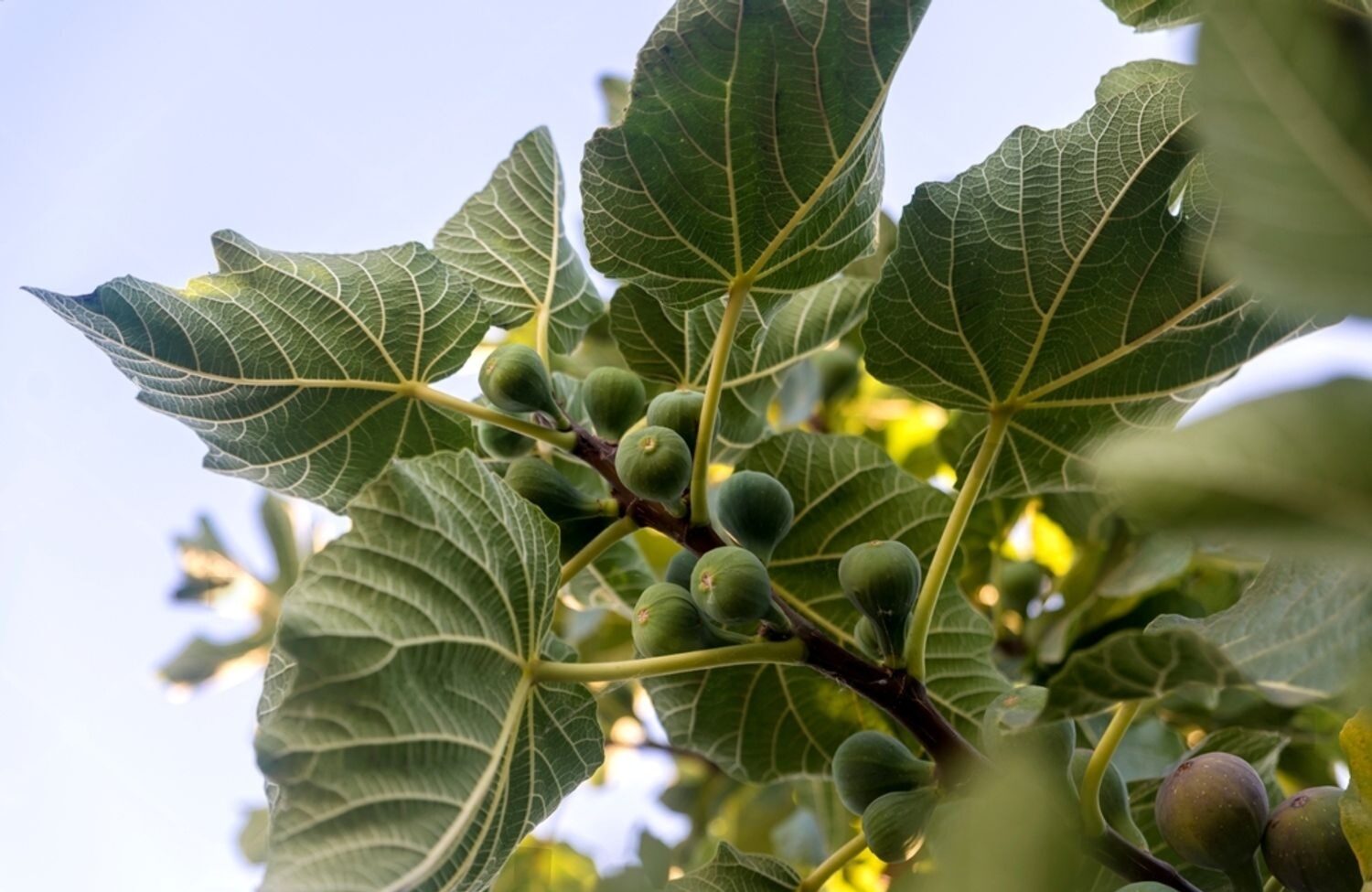The fig is one of the oldest fruits in history, but also one of the most modern in the kitchen. With its natural sweetness, delicate texture and distinctive visual appearance, it is a fruit that has conquered both ancient civilizations and contemporary chefs.
Today we tell you the little-known history of the fig, and why it continues to be a star ingredient in pastry, haute cuisine and the most sophisticated menus.
The flower that eats itself (and its secret)
Few ingredients hide such an extraordinary story as the fig. Although we treat it as a fruit, we are actually eating an inverted flower: an internal structure full of small fertile flowers, wrapped by a fleshy and sweet skin.
But the most amazing thing is not its shape, but how it is fertilized.
For thousands of years, each variety of fig tree has lived in symbiosis with only one type of wasp: the fig wasp, a tiny, specialized species that can only reproduce within that particular variety of fig. Not just any insect gets in. The entrance to the fig (called the ostiole) is so narrow and specific that only that wasp can pass through it.
When it does, a perfect cycle is initiated. The wasp enters to lay its eggs, and in the process pollinates the inner flowers of the fig. After she lays her eggs, her life ends. And the fig, in an equally natural act, releases enzymes that break down the wasp completely, transforming it into nutrients for the developing fruit. This may sound wild, but it is one of the most sophisticated symbiotic processes in the plant world. And it’s also a story that adds value, mystery and beauty to a product that arrives on the plate with thousands of years of evolution behind it.
The perfect fig, whether or not it is in season.
Although figs are in full season during the late summer and early fall months, their fresh consumption window is short and delicate handling can be challenging in professional environments.
Uneven ripening, thin skin, the ease with which it spoils or oxidizes, and sensitivity to cutting mean that the use of fresh figs in cooking or baking requires foresight and a great deal of control.
For this reason, more and more chefs, pastry chefs and caterers are opting for formats such as the Frotz® IQF fig which preserves the natural flavor, the mellow texture and the aesthetics of the product, with the advantage of being available all year round.
Frotz Fruits offers ready-to-use figs:
- Segmented and deep-frozen piece by piece, without frosting or agglomeration
- Clean cut, ideal for cakes, spoon desserts, buffets and savory presentations.
- Maintaining its structure after cooking or cold plating
The result? A versatile and visually impeccable ingredient that you can use in any season, without depending on the weather or the quality of the fresh produce at the time.
Behind its sweetness, honeyed texture and elegant image, the fig holds a millenary history: an inverted flower that can only be pollinated by a specific wasp, it is a sacred symbol for entire civilizations.
Today, that same fig that used to grow in Mediterranean temples and gardens is reinvented in professional kitchens and menus that focus on flavor. Thanks to formats such as Frotz IQF figs, it is possible to incorporate this unique product in creative recipes ready to surprise.

